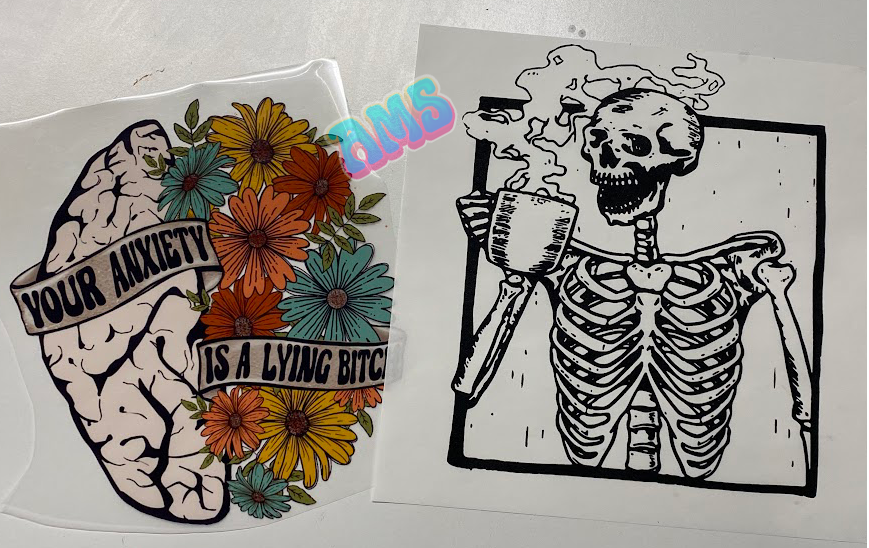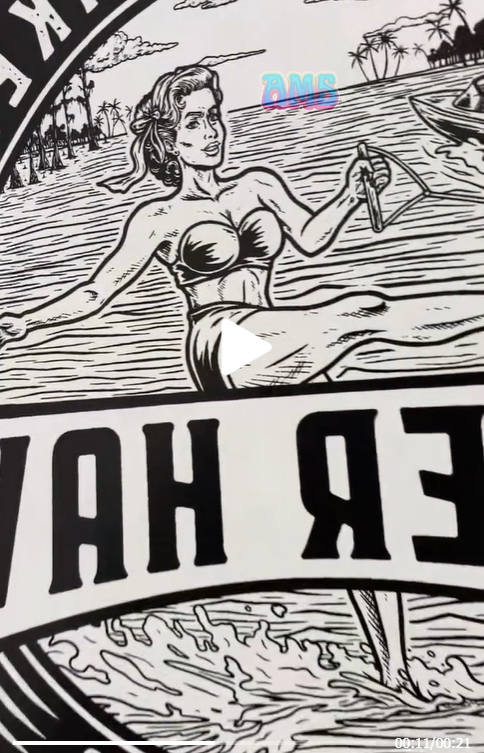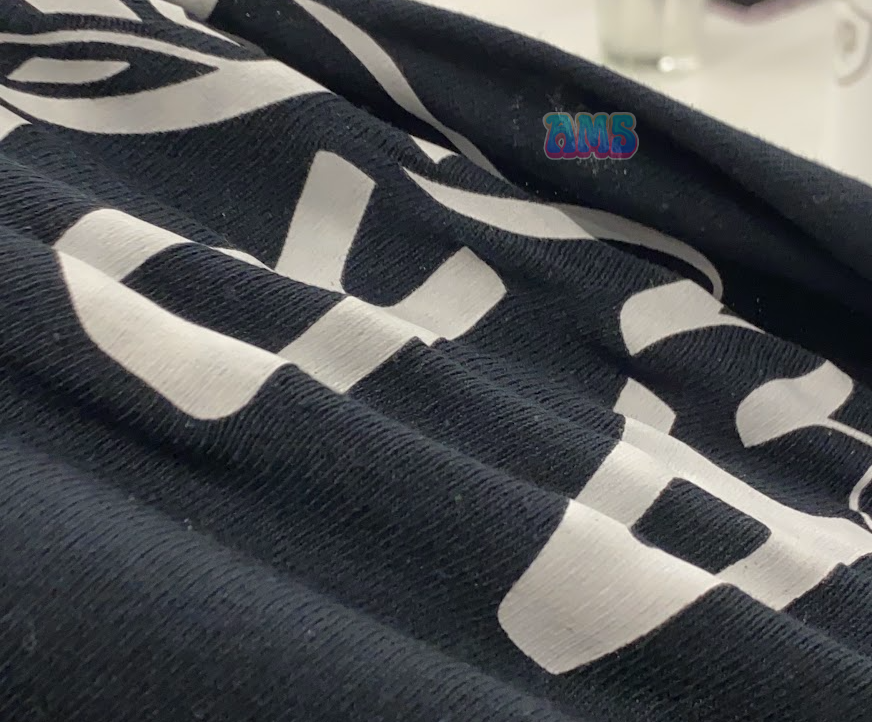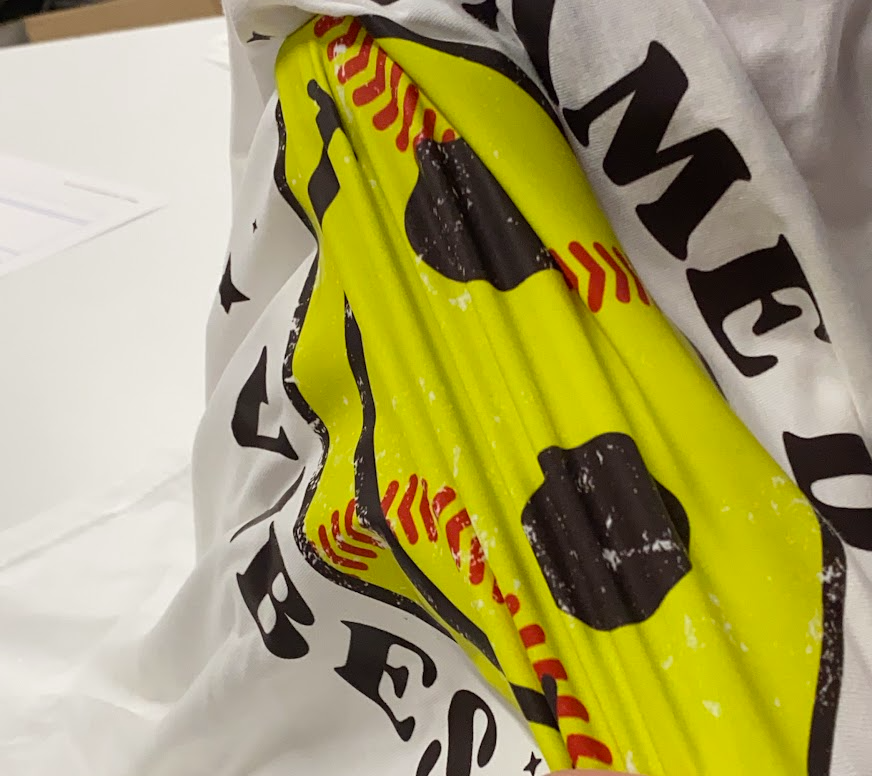Screen Print Transfers vs DTF Transfers - Which Should You Choose?
Author: Alex S. - 6/20/2023

Are you torn between Direct to Film (DTF) and Screen Print transfers for your next big project? You're in the right place.
We're going to demystify the whole DTF vs. Screen Print debate.
By the end of this post, you'll have a crystal clear understanding of these two powerhouse printing methods.
Not only that.
You'll know exactly which one to choose for your unique needs.
That's right.
No more second-guessing. No more uncertainty.
Just the confidence of knowing you're making the right choice.
Let's dive in.
Table of Contents:
- What are DTF & Screen Print Transfers
- DTF Key Considerations
- Screen Print Transfer Key Considerations
- DTF Transfers: The Pros and Cons
- Screen Print Transfers: The Pros and Cons
- Durability: Screen Print Transfers vs. DTF Transfers
- Other Options: Broadening Your Custom Print Horizons
- Choosing Your Custom Print Method

What are DTF & Screen Print Transfers
So you're diving into the world of custom prints. Maybe you're a burgeoning designer. Or you own a t-shirt company. Or maybe you just love the idea of putting your unique stamp on your clothing.
Here's the big question you're facing: DTF or screen print transfers?
DTF Transfers: The New Kid on the Block
DTF. It stands for Direct-to-Film.
It's one of the latest trends in the printing industry.
And it's making waves for a reason.
The process involves printing your design directly onto a film. Then, using heat, that design is transferred to your garment.
Sounds simple enough, right?
But what makes DTF stand out is the quality. It can handle complex, multi-colored designs with ease.

And it doesn't just work on cotton - DTF is a chameleon, adapting to all kinds of fabrics.
Screen Print Transfers: The Classic Route
Now, let's talk about screen print transfers. They're the old-school method. The classic. And they've got a long history of satisfied customers behind them.
With screen print transfers, each color in your design is applied one at a time through a screen.
Think of it like an artist applying paint to a canvas.
The result? A vibrant, crisp image that's made to last.
Screen print transfers are tried-and-true. They've been around for decades, and they're not going anywhere anytime soon.
When Screen Print Transfers Shine - Examples
As we delve deeper into the world of custom prints, let's consider a scenario.
You've got a client.
They want a bulk order of t-shirts, all with the same design.
Or, they're looking for medium quantities of single color artwork.
Or maybe they need an ultra-detailed design.
Or a specific Pantone Matching System (PMS) color.
These are where screen print transfers come into their own.
Bulk Orders? Screen Print Transfers Say "Bring It On"
Let's say you're dealing with large quantities of the same design. Here, screen print transfers are your best bet.
Why?
Because once the screens are made, you can easily replicate the design over and over. You get consistency and quality, all at a cost-effective price point.
The Single Color Artwork Specialist
Got a client who wants medium quantities of single color artwork? Screen print transfers have you covered.
The single-color process is simple and straightforward. It's a breeze to replicate. And it delivers a crisp, clean result every time.
Fine Detail Designs? No Problem
When it comes to very fine detail designs, screen print transfers truly shine.
The process can capture intricate details with precision.
So your client's complex logo or intricate design?
It'll look sharp, clear, and professional.

Custom PMS Colors? Check
Need a specific PMS color? No worries. Screen print transfers are up to the task.
With screen printing, you can mix inks to match any Pantone color.
That means your client's brand colors will be spot on, every time.
In the next chapter, we'll explore when DTF transfers might be the better option. Because, as we've said, it's all about finding the right fit for your specific needs. Keep reading.
The DTF Transfers Advantage: Where It Excels
We've seen how screen print transfers can be the right fit for certain scenarios. But what about DTF transfers? When do they step up and say, "This is my moment"?
Let's explore.
Complex Color Designs? DTF Says Yes
High color, complex designs can be a challenge. But for DTF transfers, it's a walk in the park.
DTF doesn't balk at a palette full of different colors. It embraces it.
The process can handle multiple colors all at once, without compromising on quality. So your design will look as vibrant and intricate as you intended.
Low Quantity Orders? No Problem
Got a small order? That's where DTF transfers shine.
Unlike screen print transfers, DTF doesn't require a lot of upfront setup. So it's ideal for low quantity orders.
You get the same high-quality result without the need for a big batch.
Variety of Sizes? Check
A range of different sizes in the order can be tricky. But not for DTF transfers.
The flexible nature of the DTF process means it can adapt to various sizes with ease. Whether it's a small logo on a pocket or a large design on the back of a hoodie, DTF has got you covered.
Extra Large Design? Bring It On
Need to print an extra large design? DTF transfers are up to the task.
With DTF, you're not restricted by the size of the screen.
That means you can go as big as you want.
So your extra large design you have? It will be printed large and in charge in all its glory.
.png)
So, as you can see, DTF transfers have their unique advantages.
They're versatile, adaptable, and up for any challenge.
Remember, the key is to choose the method that best suits your specific needs. In the next chapter, we'll offer some tips to help you make your decision.
Screen Print Transfers: Key Considerations
You're getting closer to finding your perfect print.
You've learned about the benefits of screen print transfers. But, as with everything, there are things to keep in mind.
Let's dig in.
Minimum Order Quantity
Screen print transfers often come with a minimum order quantity. This is because of the setup involved in creating the screens.
If you're dealing with large quantities, it's no issue. But for smaller orders, it could be a stumbling block.
Quantity Discounts
On the bright side, screen print transfers often offer significant quantity discounts.
The more you order, the lower the cost per unit.
So, for those large orders, your wallet will thank you.

Cost at Low Quantities
It's worth noting that screen print transfers can be costlier at low quantities. The upfront setup can drive up the price. But remember, at AMS Transfers, we don't charge setup fees.
Super Soft Hand Feel
One of the big wins with screen print transfers is the super soft hand feel.
It's often considered the best feeling transfer type around.
Your customers will notice the difference.
Color Selection
With screen print transfers, you typically select from a set number of colors.
Want a custom color?
There might be an extra fee. BUT the end result could be worth it.

Size Limitations
Typically, screen print transfers are limited in size. They usually max out at around 12.5x15”. So, for those extra large designs, you might need to explore other options.
Set Up Fees
At AMS Transfers, we've got you covered.
We don't charge setup fees for our screen print transfers.
So you can focus on creating the best design, without worrying about hidden costs.
However do not that most other screen print transfer suppliers will charge some sort of set up fee to create the order.
Turnaround Time
Typically, screen print transfers have a longer turnaround time than DTF transfers.
But, as they say, good things come to those who wait.
Okay, as you can see, screen print transfers have their nuances. But! They also have their unique strengths. Understanding these will help you make the right choice for your project.
DTF Transfers: The Pros and Cons
As we near the end of this guide, let's delve a bit deeper into the world of DTF transfers.
Like any process, DTF has its upsides and its downsides.
It's all about understanding these and figuring out what works best for your specific needs.
The Pros
1. High Color Complexity: DTF transfers thrive with complex, multi-colored designs. No matter how many colors your design has, DTF can handle it.
2. No Minimum Order Quantities: Got a small order? No problem. DTF transfers don't require a minimum order quantity, making them ideal for small, bespoke orders.
3. Versatile Sizing: Whether it's a small logo or an extra large design, DTF can adapt to a range of sizes with ease.
4. Fast Turnaround Time: If you're in a hurry, DTF transfers are a great choice. They typically offer a faster turnaround time than screen print transfers.
The Cons
1. Fine Detail Limitations: While DTF transfers are great for complex designs, they might not be the best fit for very small, thin details.
2. Print Feel: DTF transfers can sometimes feel thick on the tee, especially when the designs are ink heavy.
3. Color Matching: DTF transfers can't match PMS codes exactly, but they will print within 5-10% of your design color.
4. Design Complexity: If your design is simple and monochrome, you might want to consider other options.
In the end, the choice between DTF and screen print transfers comes down to your specific needs and preferences.
Consider the nature of your order, the complexity of your design, your timeline, and your budget.
Screen Print Transfers: The Benefits and Drawbacks
As we continue to navigate the custom print landscape, it's time to take a closer look at screen print transfers.
Just like DTF transfers, screen print transfers have their own unique set of advantages and disadvantages.
The Pros
1. Bulk Order Efficiency: Screen print transfers excel when it comes to large quantities of the same design. Once the screens are made, replication is easy and cost-effective.
2. Single Color Artwork Specialist: If your design is single color, screen print transfers can deliver a crisp, clean result every time.
3. Fine Detail Precision: Screen print transfers are capable of capturing very fine detail with impressive precision. Your complex logos or intricate designs will look sharp and professional.
4. Custom PMS Colors: Screen print transfers allow you to mix inks to match any Pantone color. Your client's brand colors will be spot on, every time.
.png)
5. Soft Hand Feel: Screen print transfers offer a super soft hand feel, often considered the best feeling transfer type around.
The Cons
1. Minimum Order Quantity: Screen print transfers often come with a minimum order quantity due to the setup involved. This could be a hurdle for smaller orders.
2. Higher Cost at Low Quantities: Because of the upfront setup, screen print transfers can be costlier at low quantities.
3. Limited Size: Screen print transfers are typically limited to around 12.5x15”. For larger designs, you might need to explore other options.
4. Longer Turnaround Time: Screen print transfers usually have a longer turnaround time than DTF transfers.
By understanding the pros and cons of screen print transfers, you can make a more informed decision for your specific project.
Remember, it's not about which process is better overall—it's about which process is better for your particular needs.
Now with all of this you’re probably just wondering, what about the durability between each transfer?
Durability: Screen Print Transfers vs. DTF Transfers
When it comes to custom prints, durability is a key factor.
You want your designs to stand the test of time, washing after washing.
Let's take a look at how screen print transfers and DTF transfers stack up in terms of longevity.
Screen Print Transfers (SPTs)

Screen print transfers are known for their durability.
The inks used in the process are designed to adhere firmly to the fabric, creating a bond that can withstand numerous washes.
With proper care (think washing inside out, using a mild detergent, and avoiding high heat), screen print transfers can maintain their vibrant colors and sharp details for many wears to come.
DTF Transfers

DTF transfers also offer good durability. However, the lifespan of a DTF print can be slightly less than that of screen print transfers.
The durability of DTF transfers can be influenced by a few factors, including the quality of the base garment, the ink coverage of the design, and the care taken in washing and drying.
With the right care, DTF transfers can still offer a significant lifespan, delivering many wears with consistent color and quality.
The Absolute Longest Lasting Print: Direct Screen Printing
If you're looking for the longest lasting transfer around, you might want to consider direct screen printing.
This process prints the ink directly onto the garment, resulting in a durable, long-lasting print.
While it's not a transfer, it's a strong contender when durability is your top priority.
Remember, the longevity of your print is just one factor in your decision. You'll also want to consider the nature of your design, the size of your order, and your budget. With a clear understanding of your needs, you'll be well equipped to make the best choice for your custom print project.
Other Options: Broadening Your Custom Print Horizons
DTF transfers and screen print transfers are fantastic options for custom prints. But, they're not the only players in the game. As you make your decision, it's worth considering some of the other methods out there. Each one has its own strengths and is suited to different types of projects.
Embroidery
Embroidery is a classic option for custom prints. It involves stitching your design directly onto the garment. This results in a premium, textured look that's perfect for logos and branding. While embroidery doesn't offer the same level of detail as DTF or screen print transfers, it adds a touch of class that's hard to beat.
Sublimation
Sublimation is a process that uses heat to transfer dye directly into the fabric. This results in a print that's incredibly vibrant and long-lasting. Sublimation is best suited to polyester fabrics and is a great choice for full-color, complex designs. However, it can't be used on dark fabrics.
Heat Transfer Vinyl (HTV)
Heat Transfer Vinyl, or HTV, involves cutting out designs from special vinyl and heat pressing them onto the fabric. HTV is great for simple designs and can be used on a variety of fabrics. While it doesn't offer the same level of detail or color complexity as DTF or screen print transfers, it's a popular choice for single-color logos and lettering.
Cricut Vinyl
Cricut Vinyl is a type of HTV that's cut using a Cricut machine. This is a great option for DIYers and small businesses. It offers a range of colors and finishes, but like HTV, it's better suited to simpler designs.
As you can see, there are many ways to get your design onto a garment. The best method for you depends on your design, your budget, your timeline, and the type of product you're creating.
In the final chapter, we'll wrap up with some tips to help you decide between DTF transfers, screen print transfers, and the other options we've discussed. Stay tuned.
Wrapping Up: Choosing Your Custom Print Method
Throughout this guide, we've explored the ins and outs of DTF transfers and screen print transfers.
We've also touched on some of the other custom print methods out there.
Now, it's time to bring it all together and help you make the best choice for your specific needs.
DTF vs. Screen Print Transfers: A Summary
Screen print transfers excel with large quantities, single color artwork, fine detail designs, and when custom PMS colors are needed. They offer a super soft hand feel and can reproduce very fine details. However, they often require a minimum order quantity and may be costlier at low quantities.
DTF transfers, on the other hand, are perfect for high color, complex designs, low quantity orders, and projects with lots of different sizes. They don't require a minimum order quantity and offer a faster turnaround time. But, they may not be the best for very small, thin details and can't match PMS colors exactly.
Key Considerations
When choosing between DTF transfers and screen print transfers, consider the following:
Quantity: Do you need a large quantity of the same design or a smaller, bespoke order?
Color: Does your design have a single color or multiple colors?
Detail: Does your design include very fine, intricate details?
Size: Do you need a small logo or an extra large design?
Turnaround Time: Do you need your order completed quickly or do you have more time?
Budget: What is your budget for the project?
Durability: How important is the longevity of the print?
Remember, the best method for you depends on your specific needs and preferences. Take the time to weigh the pros and cons of each method against your project requirements. And of course, feel free to reach out to your custom print provider with any questions. They're there to help guide you through the process and ensure you get the best possible result.
Thank you for reading this guide. We hope it's given you a clearer understanding of DTF transfers, screen print transfers, and the other options available.
Here's to creating amazing custom prints!
